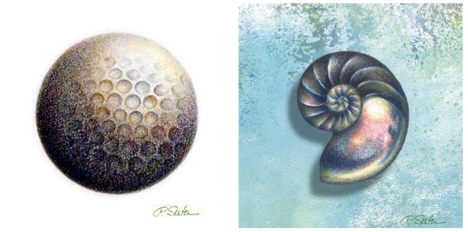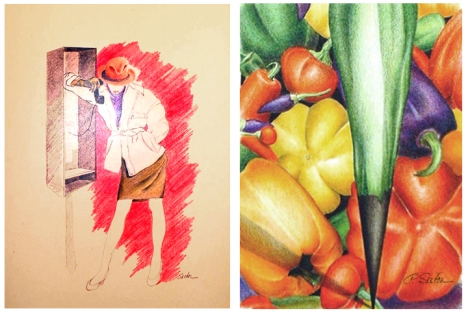Drawing Tips: Colored Pencil
 Colored pencils are one of my favorite mediums. They’re also one of the most unforgiving, as a friend recently discovered.
Colored pencils are one of my favorite mediums. They’re also one of the most unforgiving, as a friend recently discovered.
My friend’s son, a budding artist, had apparently drawn an amazing picture, then decided to color it in with colored pencils. But he “hated what he did” and wanted to erase the color. She asked me if there were an amazing eraser out there that would solve the problem – or if he was doomed to start over.
My short answer was that there is no “amazing eraser” for colored pencil, and that yes, he was most likely doomed.
So maybe you too have decided to try illustrating with colored pencils. You’ve got your base drawing down and now you’re coloring away, shading, blending, watching the colors come to life. Time passes without notice.
Then in one dreaded moment, you realize you’ve gone too far. You reach for your eraser. You erase…. nothing happens. You try again. You curse. Maybe you scream. But you pull yourself together, because you think, ha! – there’s gotta be a solution. It’s just pencil, after all.
Not to dash your hopes, but here’s the harsh reality: Unless you’ve used your colored pencil v-e-r-y lightly (in which case you haven’t gone too far, so there’s been no cause for dread), you – just like my friend’s son – are probably, almost definitely, doomed to begin again.
There are people who use an electric eraser, or an eraser that sharpens like a pencil, but these take practice (otherwise they smear or eat the paper), are meant for small areas, and can be more frustrating than starting over. White artist erasers or gray putty erasers, which I personally love for regular pencil, don’t do the trick with colored pencils, only taking off slight upper layers of shading.
Aside from starting over, another option is to turn your mistake into something else – sometimes a mistake offers a new way to think about your picture. But once you’ve laid down a bunch of color, erasing is not a viable option.
The real lesson here of course, is about going slowly…. before it’s too late to go back! And that making a sketch first (even a rough one) to test out the color is a real smart thing to do.
You can also lay a piece of tissue paper over the drawing and color over it (on the tissue paper), to get an idea of how the color might look – just keep in mind that the texture of the tracing paper creates a different feel, and that colored pencils will behave differently on drawing paper. But this simple step can let you know whether you want to forge ahead with color at all.
And like anything else, the more practiced you become, the more skilled and confident you’ll be, and those mistakes won’t be such a concern.





No Comments